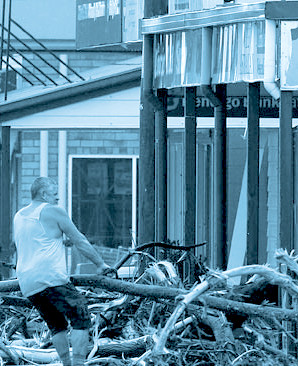Disaster fund described
 The architects of a $10 billion cyclone reinsurance pool say a similar fund is needed for other natural disasters.
The architects of a $10 billion cyclone reinsurance pool say a similar fund is needed for other natural disasters.
Following Brisbane’s devastating 2011 floods, the Natural Disaster Insurance Review led to the establishment of a $10 billion taxpayer-backed underwriting scheme in northern Australia.
John Trowbridge and John Berrill, two of the report’s authors, say that the rapidly rising cost of natural disasters in an increasingly extreme climate could lead to insurance “market failure” where premiums become unaffordable.
“Underwriting is a potential risk to government, but the government pays out every time this stuff happens anyway and that means the taxpayer pays out,” Mr Berrill, an insurance lawyer, has told reporters.
“When the opponents of climate change say it’s going to cost a large amount of dough if we get rid of coal-fired power stations, I say, well, the cost of doing nothing is more.”
Since the northern Australia reinsurance pool finally got going last year, it has underwritten 880,000 residential and small business property insurance policies for the risk of cyclone and related flood damage. The federal government says it should halve insurance bills.
The publicly funded reinsurance should charge lower fees than a private company, but a Senate committee has been established to determine whether that is actually occurring.
Mr Berrill said the northern Australia scheme “needs to be expanded as we’re at a tipping point of market failure here”.
Mr Trowbridge, an actuary and consultant, has laid out the steps required for a potential expansion of the northern Australia scheme.
He says one possible model would see all insurance policy-holders forced to pay a premium for natural disasters, in the hope of spreading the cost of natural disasters across the country and make coverage cheaper for those in high-risk flood, fire or cyclone locations.
Another possibility is to ask all policy-holders to contribute to a pool for natural disaster payouts, with a sliding-scale for costs based on the risks of where people lived.
A third idea is to have policyholders pay a direct premium for a flood reinsurance pool, similar to one operating in the UK at a cost of £10 ($18) a head.








 Print
Print